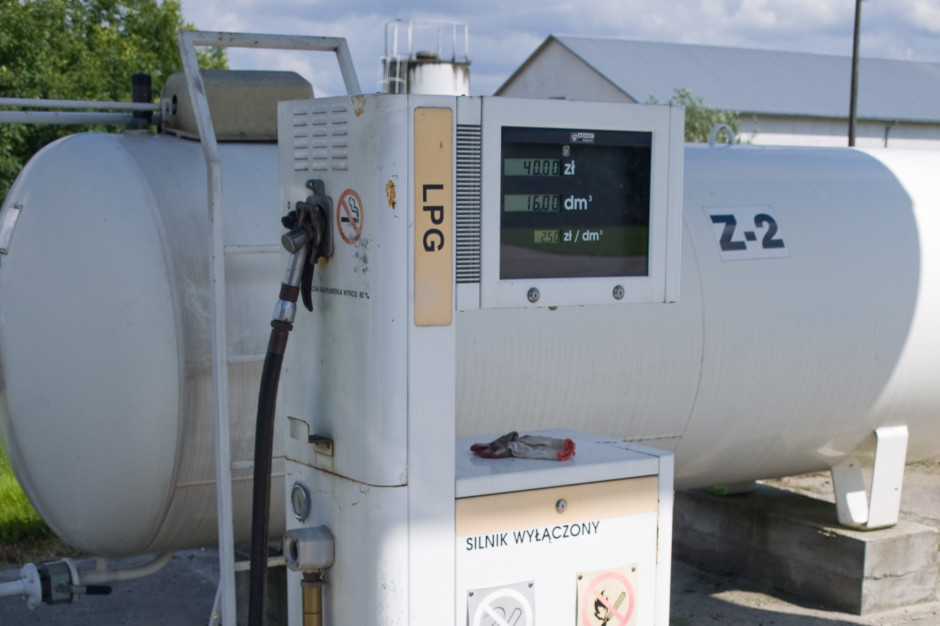LPG importers to Poland have no illusions. EU sanctions on LNG mean that fuel stations will be up to 30% more expensive. You also have to take into account problems with access to fuel. We speak with Pawel Bielski, President of the Polish Chamber of Liquefied Gas.
- We expect that when the specified annual transition period ends, there may be short-term disruptions with the availability of LPG on the market, says Pawel Bielski, President of the Polish LPG Chamber (PIGP), which represents companies importing LPG from Russia.
- It will also be more expensive – for owners of 3 million LPG cars. According to our interlocutor's estimates, even by 20-30 percent.
- If the country – in cooperation with national entities dealing with the import and distribution of LPG – does not start investing in transportation and storage infrastructure as soon as possible, the situation on the Polish LPG market could be very difficult within a year.
Last year alone, the European Union spent a total of €1.1 billion on importing LPG from Russia. The vast majority of it, about two-thirds of this amount, went from Russia to Poland. This is about to end. The latest package of European Union sanctions that were just approved includes a ban on the import of this fuel from the East, subject to a 12-month transition period. What does this mean for the Polish market, which is highly dependent on Russian liquid gas?
– It is good that EU decision-makers listened to the voice of the industry and allowed this transition period to prepare for the new situation. Therefore, in the next 10-12 months, that is, when companies are still able to implement contracts already signed, I do not expect any rapid and major changes in the market.
Later we have to prepare for turmoil.

Because of the sanctions, it will be more expensive and there may also be problems with the availability of LPG in the market
What kind of disruptions can you expect? Could Polish stations where more than 3 million cars are fueled with LPG? Could they run out of fuel?
– We expect that when the one-year transition period ends, there may be short-term disruptions to the availability of LPG in the market.
We must remember that after the outbreak of the gas crisis last year, a new customer for LPG appeared on the market, namely large industry, which, fearing high prices and the unavailability of natural gas, began to switch to LPG.
Therefore, over the next 12 months, we, as LPG importers, and the public administration widely known, must do a lot to prevent this from happening.
First of all, it is necessary to facilitate investment processes, especially in the construction of the storage tanks that we will need, but also in strategic projects such as the construction of a large marine LPG terminal.

The state has the necessary resources for this. Suffice it to remember that since 2015, it has accumulated more than PLN 2.25 billion in reserve fees in the Mandatory Reserves Fund, which is managed by the head of the State Agency for Strategic Reserves. This is an important moment to start the construction of a large LPG port, which would make it possible to receive large ocean-going ships in Poland.
It is also worth talking about these funds supporting entrepreneurs who invest in LPG infrastructure in the west or north of the country, or simply exempting them from reserve fees. Thanks to this, additional investments of up to PLN 250 million could appear on the market next year.
We are talking about new supply trends and investments in LPG infrastructure that will enable this diversification. How will this affect auto gas prices? Will it be more expensive?
-We have to be prepared for the fact that it will be more expensive because the logistics will be more expensive. In addition, it is expected that in the first period after the end of the transition period there will be some shortages in the market, which will likely translate into increases in speculative prices.
It is difficult to estimate the size of the increases today, because it will be determined by the supply situation in global markets when the transition period ends, that is, in December of next year.
However, I suppose we can expect prices to rise by 20-30%. But at this stage, we must remember that even such an increase in LPG prices will not make LPG lose its competitiveness compared to gasoline.
There will be no problem in diversifying the supply directions. There is an oversupply of LPG in the market
What about the availability of fuel in global markets? Will Polish importers have somewhere to buy supplies?
– There is no problem here, as we are currently dealing with a surplus in LPG production compared to demand in global markets.
However, there may be other worrying bottlenecks, primarily resulting from rail logistics in the West on routes from ARA ports via Germany to Poland and from logistics at Polish ports. Currently, we have three facilities that enable LPG imports by sea, but they are unable to meet the demand in the local market.
Moreover, most of the shipping and warehousing infrastructure is currently located on Poland's eastern border, where most goods still arrive. Apart from these stations, we can count on the number of facilities that can accept full train shipments.

So, to diversify LPG supply trends, investments in railways are also needed?
– Domestic LPG importers are constantly investing in logistics, but the biggest challenge we currently face is procedural issues. Obtaining all the permits, approvals and decisions for a simple investment, such as building railway sidings, sometimes takes several years. Meanwhile, the facility itself takes 3 months to build, after which you have to wait again for acceptance. If these decision-making processes were accelerated, we would certainly be in a very different place.
In the face of the urgent need to diversify LPG supply trends, it is necessary to accelerate investments in infrastructure for transporting and storing LPG, which is what we are calling for as an industry. This would ease the ban on imports of liquefied petroleum gas from the east and control a significant rise in the prices of this raw material.
However, if the country – in cooperation with national entities dealing with the import and distribution of LPG – does not start investing as soon as possible, the situation on the LPG market in Poland could be very difficult within one year.

“Coffee enthusiast. Troublemaker. Incurable introvert. Subtly charming twitter scholar. Award-winning social mediaholic. Internet buff.”








